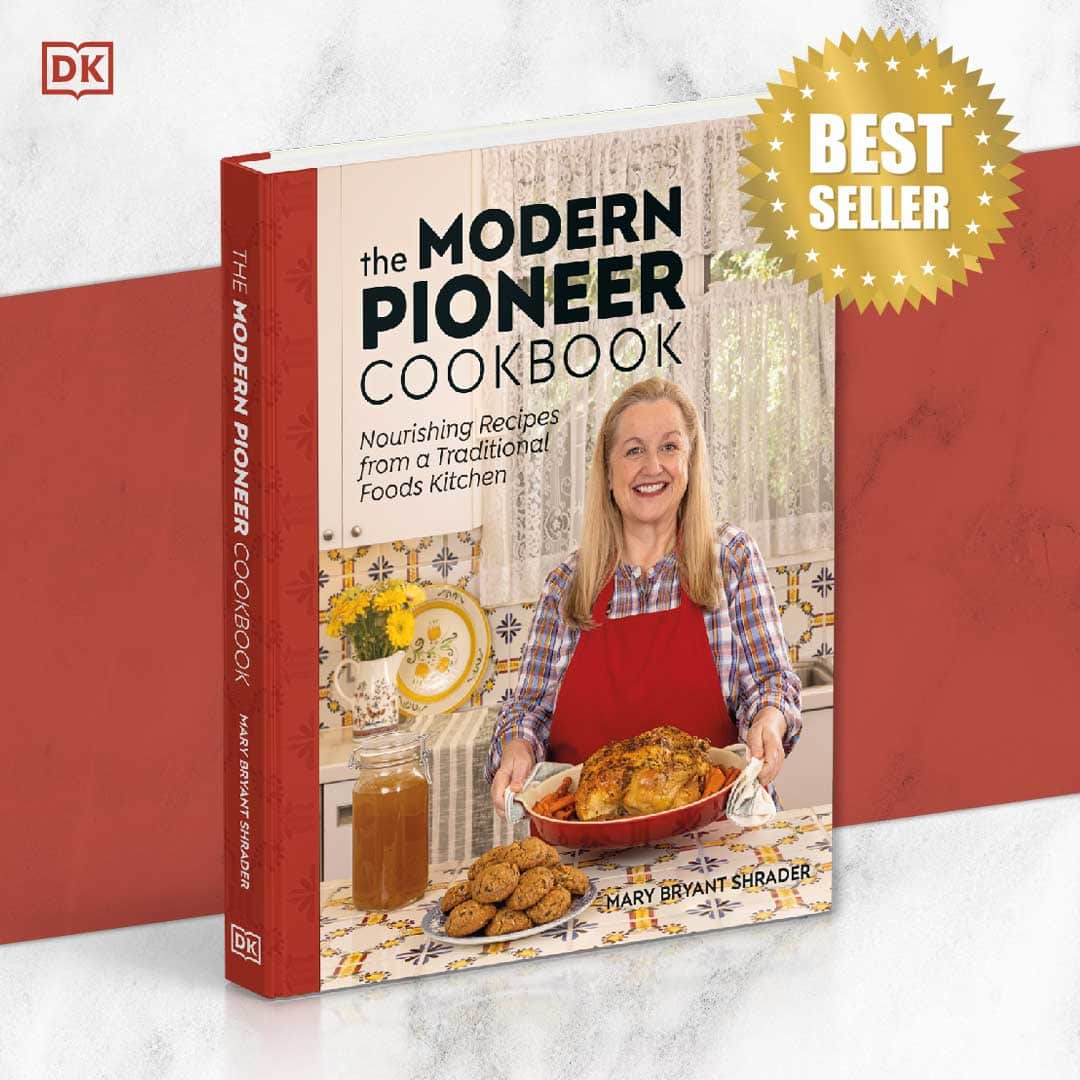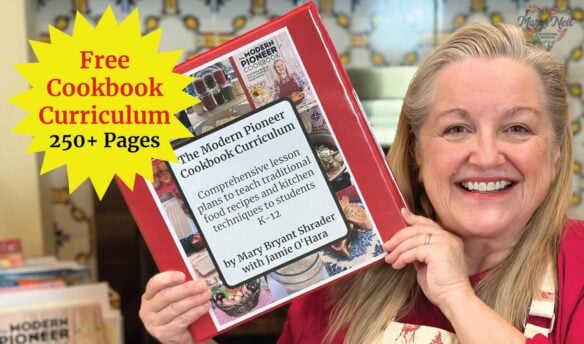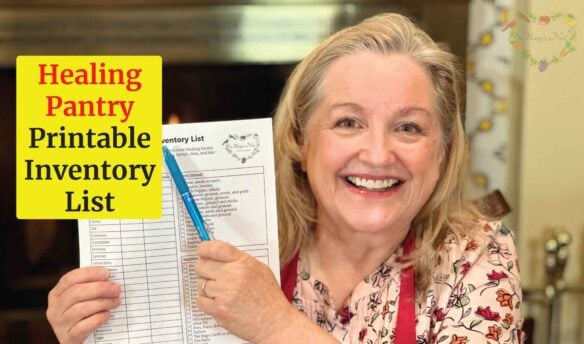Building your Great Depression Pantry and stocking it with a variety of non-perishable foods can prepare you to weather the most difficult times. You’ll be able to use your supply of Depression Era Foods to expand your palate and gain valuable culinary skills in preparing these foods, just like our ancestors did during the Great Depression.

To get started building your Great Depression Pantry, watch my “Want To Thrive During Tough Times? Stock These 10 Essential Foods!” video, read this blog post, and download my free Great Depression Pantry Shopping Guide.
Affiliates note: As an Amazon Associate I earn from qualifying purchases. My content may contain affiliate links to products and services. If you click through and make a purchase, I’ll receive a small commission. It does not affect the price you pay.
Table of Contents
- Frequently Asked Questions
- Get Started Building Your Great Depression Pantry
- Download the Great Depression Pantry Shopping Guide
- 1. Alternative Sweeteners
- 2. Alternative Flours and Grains
- 3. Rice and Beans
- 4. Canned Fruits and Vegetables
- 5. Canned Fish and Meats
- 6. Coffee and Tea
- 7. Pasta
- 8. Peanut Butter
- 9. Popcorn
- 10. Shelf-Stable Fats
- Download Your Free 36-Page Pantry List
- The Modern Pioneer Cookbook
- The Modern Pioneer Cookbook
- Kitchen Academy Videos
- More Free Downloads
- Favorite Food Storage Supplies
Frequently Asked Questions
To build a Great Depression Pantry, you need to inventory your non-perishable food, use my Great Depression Pantry Shopping Guide to create a grocery list of the Depression Era Foods you don’t have and need to buy, and purchase those missing foods to stock your Great Depression Pantry over time and within your budget.
Many of the Depression Era Foods you decide to stock may be new to you, such as alternative sweeteners and flours. So start by only purchasing these in small amounts and begin cooking and baking with them. The more experienced you can become at incorporating new foods into your meal prep, the better prepared you will be to cook and bake with whatever foods are available to you at any particular time. You will not have to rely only on familiar foods that might be unavailable, limited in purchase amounts, or have simply become too expensive for your grocery budget.
A variety of foods were available during the Great Depression. However, home cooks who had limited funds turned to those foods that were the least expensive. The typical foods that were available during the Great Depression included molasses for sweetening instead of sugar, cornmeal in place of other more costly flours, peanut butter in place of other forms of fats including butter, spaghetti dinners using inexpensive pasta, and casseroles using canned fish or chicken in place of costly cuts of meat. Other foods typically eaten during the Great Depression included potatoes, rice, onions, beans, and vegetables, both fresh and canned.
Breakfasts varied during the Great Depression depending on the area where people lived and the availability of food. Ida Bailey Allen, who carried the moniker The Nation’s Homemaker, was a prolific writer of cookbooks, and she wrote a number of them during the Depression. In her cookbook titled Cooking, Menus, Service (1935), Mrs. Allen shares that a typical breakfast during the 1930s might include oatmeal cooked with dates for added sweetness, then topped with a bit of milk, a muffin with butter, and a piece of bacon along with coffee and milk.
The most important thing you can do to prepare your pantry for a rise in grocery prices and decreased income, such as during a recession, is to regularly add a few extra items to your grocery cart each week. You can do this for as little as $5.00 per week. In time, you will have stocked two weeks of additional food. You’ll want to continue working toward stocking at least six months, with your ultimate goal to have at least one year of food for you and your family.
By preparing your pantry for a recession, you will have the necessary foods to make meals to feed your family. You won’t be at the mercy of rising prices or foods being out of stock due to shortages or supply chain problems. You will not need to rush out and pay top dollar for food that might be in short supply or, even worse, simply not available.
The Four Corners Pantry consists of your:
1. Working Pantry – What you access every day where you store non-perishable foods.
2. Refrigerator
3. Freezer
4. Extended or Prepper Pantry – Where you store the non-perishable foods that you stock up on and use to restock your Working Pantry.
Get Started Building Your Great Depression Pantry
To build your Great Depression Pantry, you will start by inventorying the non-perishable foods in your Working Pantry and the Extended or Prepper Pantry (if you have one). These pantries are part of your overall Four Corners Pantry. When you make an inventory of the non-perishable foods you have, you might be surprised to discover that you already have a number of Depression Era Foods on hand.
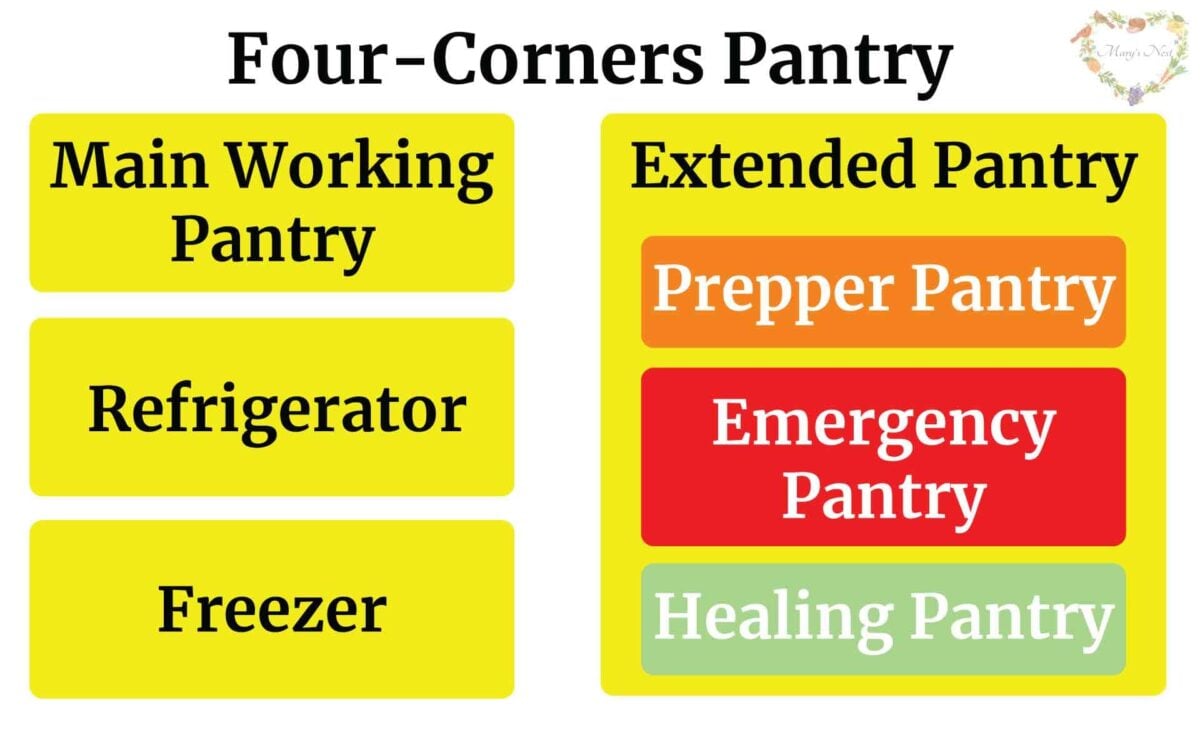
Once you complete your inventory, compare the foods you have to those listed in my Great Depression Shopping Guide to create a grocery list of the Depression Era Foods you need to purchase. Note that you do not need to buy these foods all at once. Instead, pace yourself and stock these pantry foods gradually over time and within your budget.
You will be stocking the foods that were commonly used during the Great Depression, and using these Depression Era Foods will give you the ability to create meals with an expanded set of ingredients, especially those you are not familiar with. You’ll gain experience with foods that may be more plentiful and cheaper if there’s a downturn in the economy or if we experience severe interruptions to our supply chain.
Even though some of the foods that were less expensive during the Great Depression might be more expensive today, we still want to consider stocking a variety of ingredients in our pantries because what is affordable and plentiful today might not be tomorrow. We saw this happen during 2020 when all-purpose flour and yeast were next to impossible to find. And if you were able to track down yeast, the price was through the roof!
Having a well-stocked pantry came in handy during 2020, but home cooks also had to quickly adapt to learn how to use ingredients that were different from what they were used to. Knowing how to cook and bake with a variety of ingredients will always serve us well and help us get through tough times, including job loss, bad weather, illness, limited quantities, supply chain shortages, or a pandemic.
The following sections describe the top 10 food categories you want to stock up on so that you can always have food in your Great Depression Pantry to make a meal no matter what comes your way. But before you read through them, be sure to download my Great Depression Pantry Shopping Guide.

Download the Great Depression Pantry Shopping Guide
Like our ancestors who lived through the Great Depression, we need to be prepared for the unexpected when we cannot get foods or ingredients that we are used to. By stocking a Great Depression Pantry, you’ll be well prepared to know how to cook and bake with a variety of ingredients, no matter what events may occur outside of your control.
First, inventory the non-perishable goods in your Working and Extended or Prepper Pantry, and use my Great Depression Pantry Shopping Guide to find out which Depression Era Foods you need. Next, just add a few extra items to your grocery each week from the listed categories to build up your Great Depression Pantry over time and within your budget.
- To learn about the Depression Era Food categories, watch my “Want To Thrive During Tough Times? Stock These 10 Essential Foods!” video
- To be informed of new free printables when I publish them, subscribe to my free Mary’s Nest newsletter.
1. Alternative Sweeteners
During the Great Depression of the 1930s when many homemakers found themselves with little money to stock their shelves, they had to learn to make substitutions for the foods they were normally used to buying. For example, many home cooks had to find a substitute for sugar, which had become more expensive. This is where molasses came to the rescue.
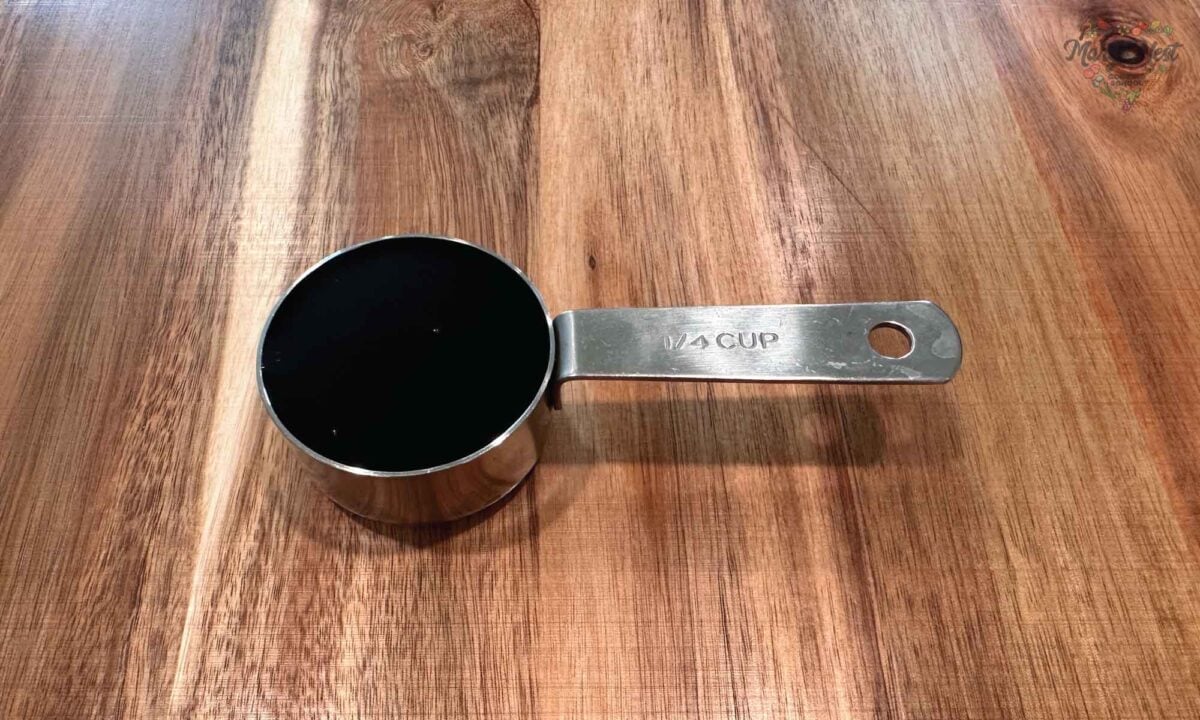
Molasses was plentiful and inexpensive, and recipes for baked goods using molasses popped up everywhere. But even though using molasses seemed like a sacrifice, it was actually a godsend. Molasses is very nutritious and rich in iron.
Home cooks also replaced white sugar with other liquid sweeteners, including honey, maple syrup, and sorghum syrup. Sweeteners such as these are a boon to our traditional foods kitchens, as much as they were a help to the Depression Era kitchens, because the more we can limit white sugar in our recipes, the better! (Check out my recipe for healthy molasses cookies.)
2. Alternative Flours and Grains
Having all-purpose or bread flour is useful, but what if your supply runs out and these flours are scarce or simply unavailable? That’s why it’s important you make sure you have a supply of alternative flours and, even better, alternative whole grains. These alternative flours and grains include:
- Barley
- Buckwheat
- Cornmeal and Masa Harina
- Einkorn
- Emmer
- Oats
- Rye
- Semolina
- Spelt
If you choose to store these as flours, instead of whole grains, keep in mind that the shelf-life of flours will vary, but most will become rancid after six months to one year. Whole grain flours with the bran and germ intact contain natural oils. In their whole form, these oils do not present a problem, but once ground into flour, the oils are exposed to air, leading to rancidity over time.
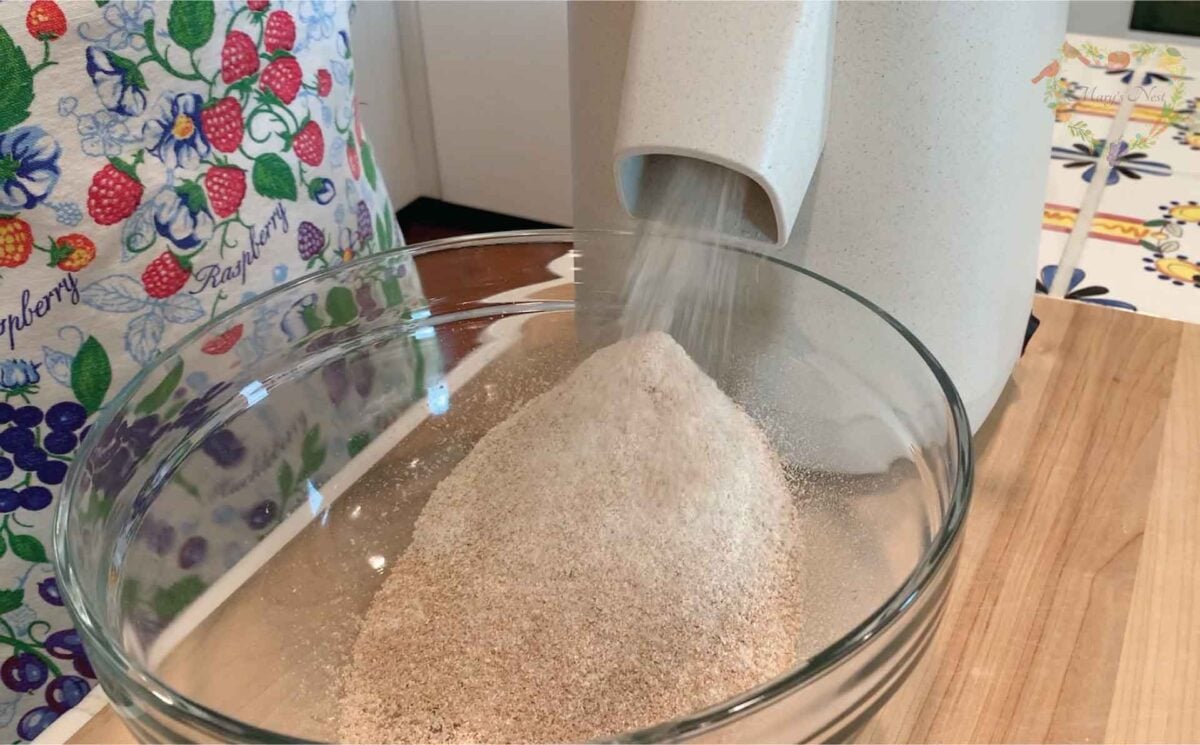
The better option for your Great Depression Pantry is to store whole grain. Yes, you will need to invest in a grain mill—either manual or electric—but whole grain is less costly than its store-bought flour counterpart. Your grain mill will quickly pay for itself as there are so many affordable options today, including my favorite electric grain mill, the Mockmill.
Plus, whole grains can serve multiple purposes when it comes to meal prep. You are not limited to just grinding them into flour for baking. Alternatively, you can keep your whole grains in their natural state, cook them like rice, and serve them as a nutritious side dish to any dinner. If you replace the cooking water with bone broth, you’ll provide additional nutrition, and tossing in a little butter and salt will further create a tasty alternative to rice.
3. Rice and Beans
Whenever the subject of stocking a pantry comes up, rice and beans are sure to enter the discussion. And the response is often…ugh! Yes, rice and beans might sound like food clearly eaten only during desperate times, but the truth is that you can cook up these two ingredients to make them both nutritious and delicious.
When choosing a rice for the long haul in your Great Depression Pantry, you’ll want to store white rice. Yes, brown rice can be more nutritious, but it also goes rancid within six months to one year. If you like to stock brown rice, be sure to keep it only in your Working Pantry and use it up regularly.
White rice is practically what many call a forever food, which are foods that never go bad or lose their nutritional value. And the good news about stocking white rice is that you can easily boost its nutrition by replacing the cooking water with bone broth or a super mineral broth. Then just add some butter and sea salt, and you have quite a filling and nutrient-rich food, not to mention a very tasty food too!
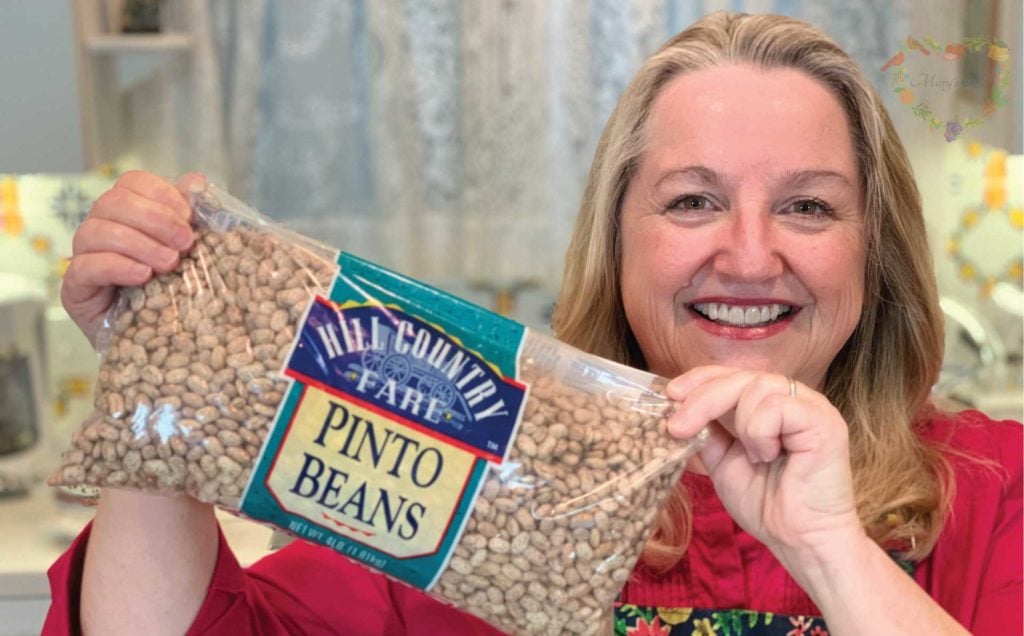
And when it comes to cooking beans, you can’t go wrong with my easy recipe for Texas style pinto beans. They are absolutely delicious and quick to make. Serve up those spicy beans with some white rice and maybe a side of homemade cornbread to sop up all the juices, and no one at your table will turn their noses up to rice and beans again!
4. Canned Fruits and Vegetables
One of the staples of any pantry are canned foods. When stored properly in a cool dark and dry place, these foods can basically last forever, according to the United States Department of Agriculture. Yes, the flavor and nutrition might degrade slightly over time, but most canned goods will last well past their best-use-by date.
5. Canned Fish and Meats
Just like canned fruits and vegetables, you want to make sure that you stock up on a good supply of canned fish and meats, including canned chicken. Canned fishes, such as herring (kippers), mackerel, sardines, and salmon, are all nutrient dense foods. Even chunk light tuna, which is lower in mercury, is worth stocking up on.

If many of these types of foods are new to you, start out buying just one can and then try some of the recipes I share with you for canned sardines, canned salmon patties, and canned chicken patties. If you find that these foods are delicious (and I’m sure you will!), add a few extra cans to your shopping cart the next time you head to the grocery store.
6. Coffee and Tea
To save money during the Great Depression, home cooks would often cut their coffee with chicory. This practice continued through World War 2 when coffee was often rationed.
If you’re a coffee drinker, I highly recommend you experiment with making a blend of chicory and coffee to prepare for times when coffee might become very expensive or hard to find. I actually like the taste of chicory and barely even notice it when it is mixed with coffee. One of the best things about chicory is that it is a pre-biotic which feeds the pro-biotics, the good bacteria, in our digestive tracts.

Frugal home cooks often served substitutes for black tea during the Depression and WW2 rationing. Those who could grow a garden, even if it was just a simple windowsill garden, would harvest herbs, like peppermint, to make herb teas that were both flavorful and nutritious.
So be sure to add some chicory and herb teas to your next grocery list. And while you are at it, be sure to pick up some instant coffee and teas. These instant drinks are freeze-dried products, and if you leave them sealed, they will have an indefinite shelf life!
7. Pasta
You know that with my Italian heritage there was no way I could put a Great Depression Pantry list together without adding pasta or macaroni, as it was called back in the 1930s! Macaroni was inexpensive and readily available during the Great Depression and the shortages and rationing of World War 2.
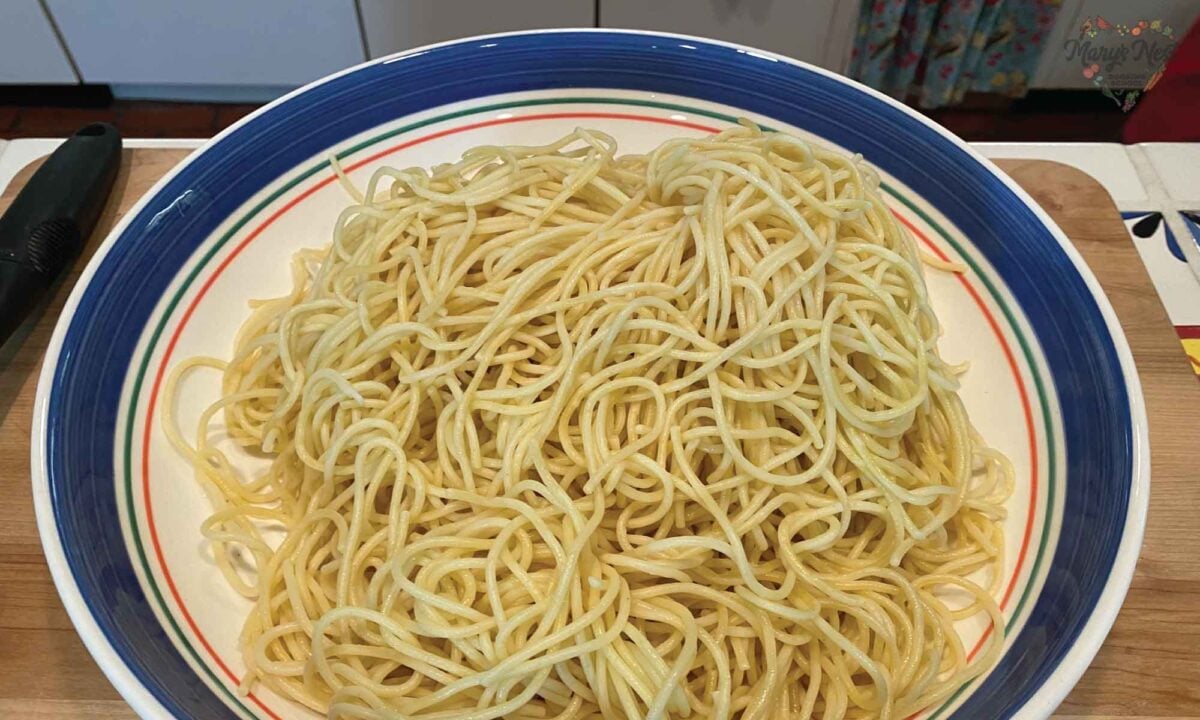
My mother has often shared with me that my grandmother served spaghetti almost every night through the difficult times of the 1930s. By combining the spaghetti with vegetables from her garden, she was able to keep her five daughters well-fed.
But don’t think you are just going to be filling up on the useless calories of white flour when you eat spaghetti or other form of macaroni. Pasta is made from durum semolina, which is a type of flour that is quite nutritious.
8. Peanut Butter
Fats like butter were often rationed during World War 1, and the US and Allied governments discouraged using these fats. High-quality fats needed to be shipped overseas to feed the troops and those suffering under the ravages of war. The US government encouraged home cooks to use lower quality, less pure fats, like bacon grease.
When the substitute cooking fats passed their prime, home cooks would save them and sell them to the local butcher. The butcher would collect the fats and send them to the military to help grease machinery and other uses.
With the shortages of fats, home cooks were encouraged to learn to cook and bake with peanut butter. It was a reasonable ingredient, and best of all, it was plentiful. It also turned out to be quite tasty and worked exceptionally well in baked goods, such as peanut butter bread, which continued to be made through the Great Depression and World War 2 and is still being made today!

So be sure to stock up on a couple of jars of peanut butter, particularly the chunky kind with only peanuts and salt as ingredients. Peanut butter has a good shelf life and comes in quite handy when other fats might be unavailable or simply too expensive.
9. Popcorn
Storing corn that is specifically made to be popped is one of the best things to add to your Great Depression Pantry. Popcorn is definitely a forever food. Even old popcorn will pop. You can top your popcorn with melted butter and sea salt or, better yet, some homemade nutritional seasoning mix for a nutrient-rich treat!
10. Shelf-Stable Fats
Making sure you have a variety of shelf-stable fats can help guarantee you will have the nutrient-dense foods you need in the event that more perishable fats, such as butter, are not available. Some of the best shelf-stable fats to store in a Great Depression Pantry are ghee and coconut oil.

Ghee is a form of clarified butter where the milk solids have been removed. This process increases the ability of the fat to stay fresh when stored at room temperature. Some say ghee and coconut oil are basically forever foods if unopened. I don’t know if I would go that far, but they have a long shelf life when stored properly.
Although olive oil is an excellent fat to keep on hand, it is best reserved for the Working Pantry. Olive oil can go rancid if left on the shelf for too long. So buy it in small amounts and use it up within three to six months of purchase.
When it comes to animal fats such as lard and tallow, I prefer to refrigerate lard. However, real tallow (rendered from suet) has an excellent shelf-life. You can easily store it for up to one year or longer, and it will still remain fresh.
Be sure to watch my “Want To Thrive During Tough Times? Stock These 10 Essential Foods!” video to learn more about these Depression Era Food categories, including some bonus foods too.
Download Your Free 36-Page Pantry List
For an extensive list of the traditional foods you can make and purchase to stock your pantry, be sure to download my free 36-page Traditional Foods Pantry List. This comprehensive eBook is full of links to recipe videos, helpful articles, and more!
The Modern Pioneer Cookbook
If you’re looking for a printed book full of my traditional foods recipes and that shows you how to create a traditional foods kitchen, be sure to preorder your copy of my new book, The Modern Pioneer Cookbook.
Kitchen Academy Videos
Are you looking for more traditional foods videos? If so, I invite you to join the Traditional Foods Kitchen Academy. Members of this optional paid YouTube community get access to exclusive videos, live streams, and other members-only perks. Plus, your YouTube comments include a special members-only badge.
More Free Downloads
How to Make Meal Prep Fast with the Meal-in-a-Bag System
Make meal prep fast and easy with these seven free recipes you can download and print out to create your own Meals in Bags.
The FREE Modern Pioneer Cookbook Curriculum – Teach Traditional Cooking Skills to Grades K-12
This cookbook curriculum gives students a love of traditional foods and kitchen skills that will last them a lifetime.
How to Stock Your Healing Pantry and Create an Herbal Medicine Cabinet
Learn about the herbs, spices, and supplies you need to create an extensive set of healing preparations.
Stay in Touch with Mary’s Nest
- Subscribe to My YouTube Channel for Traditional Foods Videos (Free) - When you subscribe, be sure to click on the notification bell that will let you know each time I upload a new video.
- Subscribe to Mary’s Traditional Foods Newsletter (Free) - Get a free 36-page eBook for signing up: How to Stock Your Essential Traditional Foods Four-Corners Pantry.
- Join the Traditional Foods Kitchen Academy - For more detailed videos and exclusive members-only perks, join my YouTube membership community.
- Order The Modern Pioneer Cookbook - Get a hardcover book of Mary's nourishing recipes from a Traditional Foods Kitchen. This bestselling cookbook is published by Penguin Random House with their DK imprint.
- Preorder The Modern Pioneer Pantry - Be one of the first to get Mary's hardcover book about preserving food and making delicious meals from your Four Corners Pantry. Mary's second cookbook is also published by Penguin Random House.
I look forward to having you join me in my Texas Hill Country Kitchen!
Favorite Food Storage Supplies
- Favorite Aprons
- 5 Gallon Buckets with Lids
- Gamma Lids – White
- Handheld Foodsaver with Docking Port
- Handheld Foodsaver
- Foodsaver Jar Adapter Kit
- Mockmill Grain Mill (for making homemade flour)
Learn more about Mockmill electric grain mills for making fresh flour and their Flake Lover's Flaker that flakes whole grain in minutes.
Amazon Shop and Shopping Guide
- Visit Mary’s Nest Amazon Shop
- Visit my Shopping Guide page
Get up to 15% off for stocking your Traditional Foods Pantry and equipping your Modern Pioneer Kitchen, including discounts from US Wellness Meats, Farmhouse Teas, Lehman's, Masontops, Cultures for Health, Survival Garden Seeds, Redmond Real Salt, Plan to Eat, and More!
